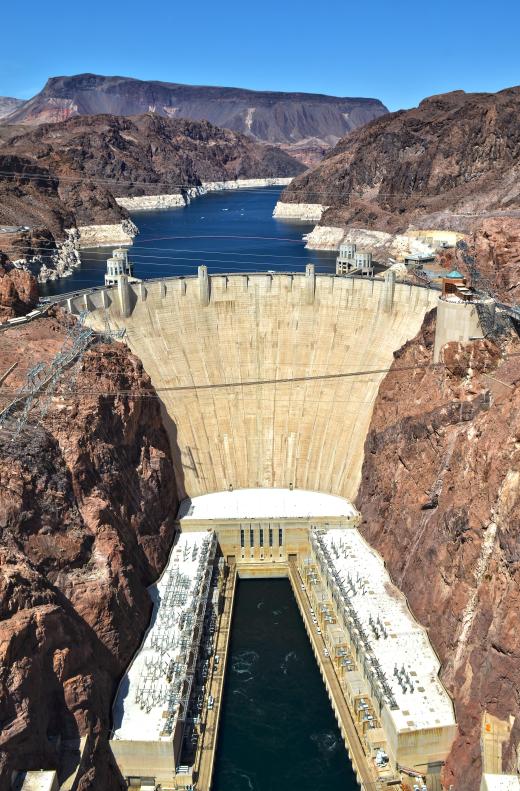Nameplate capacity is the maximum rated output of many different types of facilities, such as chemical and power plants. The nameplate capacity of a chemical plant refers to the most finished products it can be expected to provide in a given time period, while for a power plant it indicates the maximum rated electrical output. Exact definitions of this nominal capacity can also differ depending on the type of power plant. The rated capacity of dispatchable power plants is usually factored without considering external elements, such as fuel availability, while intermittent power sources, such as wind and hydroelectric facilities, are calculated based on ideal circumstances.
The term "nameplate capacity" originated with physical nameplates on generators, though it is used in a wide variety of industries to refer to many different products. Nameplates that are typically found on generators can contain vital information, such as the manufacturer of the equipment, model name, and the maximum rated output. This maximum listed output is typically different from the true nameplate capacity of a facility in the case of electric generators, and other facilities such as chemical plants and mines have no actual nameplates.

Industrial facilities, such as refineries and chemical plants, use the term to refer to a theoretical maximum output under ideal conditions. This maximum capacity is typically represented by the amount of chemicals, refined metals, or other products that can be produced in a time span such as a year. A nameplate capacity such as this may be represented by a number given in millions of pounds a year (m lb/a) or thousands of tonnes a year (kt/a) for a large facility.
Power plants use the term to refer to the amount of electrical power that can be generated under certain circumstances, and the number is typically given in watts. For dispatchable power plants that can be turned on and off to meet demand, the nameplate capacity typically refers to the maximum power output that the plant can provide over a finite amount of time, such as one or more days. Factors such as fuel availability and maintenance are usually not considered when calculating the maximum rated capacity.
Other power plants that are not considered dispatchable use a slightly different method to determine nameplate capacity. Renewable power sources that depend on outside factors, such as wind and hydroelectric, are examples of non-dispatchable power. The nominal capacity for these power plants is usually calculated based on ideal circumstances, such as sustained high winds or high river flow volumes. In practice, the output of these plants may be much lower due to circumstances that cannot be controlled.
